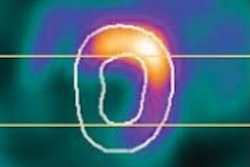Dear AuntMinnieEurope Member,
Twitter offers an excellent opportunity for radiologists to move out of their reading rooms and raise their public profiles, both with patients and other physicians.
That's according to a new column contributed by Dr. María Jesús Díaz Candamio, PhD, and Dr. Erik Ranschaert, PhD. Both are very active on Twitter, and they have some interesting thoughts on the social media platform's potential.
They see Twitter as a promising medium not only for English-speaking radiologists, but also for those who communicate in other languages. The adoption of a standard lexicon and hashtags could be a big help here, they believe. Learn more by clicking here.
In other news, the past president of the Royal College of Radiologists, Dr. Giles Maskell, has contributed a timely column on how to avoid errors in radiology. Dr. Maskell offers several strategies that can be taken to reduce errors ... read about his suggestions by clicking here.
Cardiac PET is a great tool for imaging heart function, but respiratory motion can degrade image quality and reduce the accuracy of important measurements such as ejection fraction. Fortunately, a new column in our Molecular Imaging Community describes a method for respiratory motion compensation cardiac PET, including a respiratory gating technique and a 4D motion-corrected image reconstruction algorithm. Click here for more.Egypt has released diagnostic reference levels (DRLs) that can be used as a benchmark for radiology facilities to determine if the radiation levels they are using match optimal levels. But some senior radiologists in the country are still concerned about dose. Find out what's being done by clicking here for an article on our AuntMinnie Middle East site.
Last week, France's national union of private radiologists unveiled a new nine-point initiative that addresses how radiology services in the country can be improved. Read more by clicking here.
Finally, be sure to visit our Women's Imaging Community, where you'll find this article on how adding MRI to mammography improves the detection of recurrent breast cancer.


















